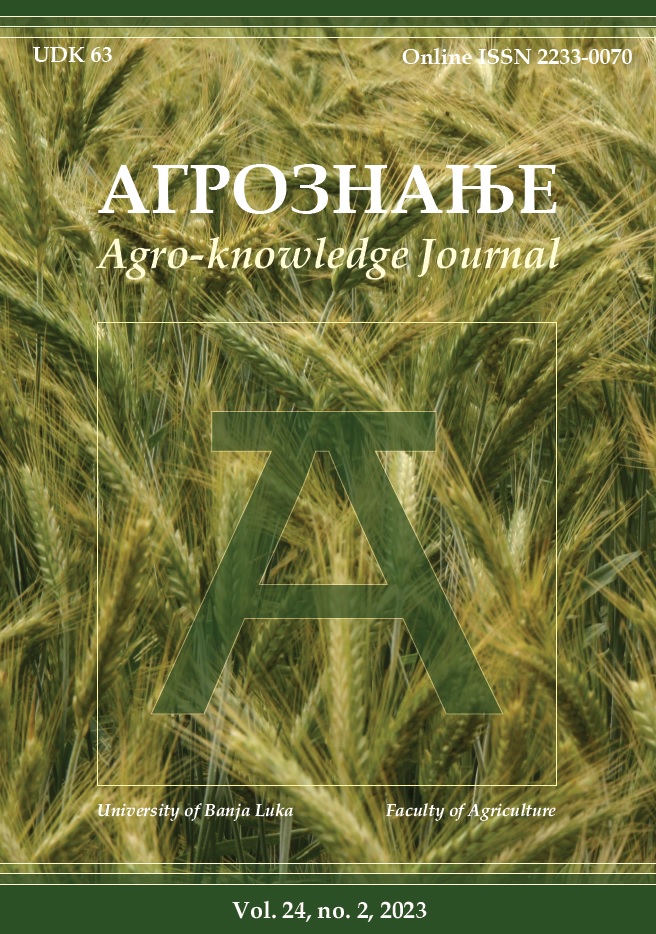Spatial assessment of the soil organic carbon content under different types of land use in the Ohrid valley
DOI:
https://doi.org/10.7251/AGREN2304193MAbstract
Spatial assessment of key soil properties is a basic prerequisite for the evidence-based decision making and sustainable use and management of soil. The aim of this work was to estimate the spatial distribution of SOC under different types of land use, by the means of Digital Soil Mapping techniques. A site-specific soil data collection for the Ohrid valley was integrated with continuous and discrete datasets of environmental covariates, serving as predictors. The selected test area outlines the variability of factors influencing the SOC content and spatial distribution. Soil sampling locations were randomly distributed within a predefined mesh with a 1-sq.km spatial resolution and further stratified to outline different types of land use within each mash square. Soil samples were collected from 93 locations at three depths, each 20 cm apart, covering the total area of 10 thousand ha of arable land, forestland, and land under natural vegetation. A set of additional environmental dataset was collected, namely the soil map, land use map, geology map, digital terrain model and its derivatives, satellite images, climate data, as well as a set of indices NDVI, SAVI, BI etc., developed from the remote sensing datasets. Multiple linear regression was used for evaluating the regression pattern between the environmental predictors and the target variable. To estimate spatial variability, several regression tree methods were used. The results obtained using this approach have given a better spatial overview of the most vulnerable areas regarding SOC depletion. Out of 21 locations examined, the content of soil organic carbon in the top layer (0-20 cm.) of forestland was on average 6.81%, while at 22 locations examined under grassland, the average content was 4.07%. The arable land, which is under continuous human impact, had the lowest content of SOC of 2.5% under field crops and 2.61% under perennials.

